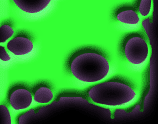|

Among the oldest of mythological creatures, dragons appear in the traditions of virtually all peoples back to the beginning of time. Because of this widespread adoption, the dragon appears in numerous forms, and local traditions have been created around many of them, crediting this tribe of monsters with many attributes. In their earliest form, dragons were associated with the Great Mother, the water god and the warrior sun god. In these capacities they had the power to be both beneficient and destructive and were all-powerful creatures in the universe. Because of these qualities, dragons assumed the roles taken by Osiris and Set in Egyptian mythology.
The dragon's form arose from his particular power of control over the waters of the earth and gave rise to many of the attributes singled out by different peoples as the whole myth developed. They were believed to live at the bottom of the sea, where they guarded vast treasure hoards,very frequently of pearls. Rain clouds and thunder and lightning were believed to be the dragon's breath, hence the fire-breathing monster. The significance of the dragon was its control over the destiny of mankind. As the myth developed in the western world, dragons came to represent the chaos of original matter with the result that with man's awakening conscience a struggle arose, and the created order constantly challenged the dragon's power. This type of dragon was considered by many to be the intermediate stage between a demon and the Devil and as such came into Christian belief. However, in the Eastern world the dragon adopted a rather different significance. He was essentially benevolent, son of heaven, and controlled the watery elements of the universe.
The Western type of dragon has been variously described, and individual dragons had their own unique forms. They appeared to be created from parts of various creatures, with the result that in general, they were described as having eagle's feet and wings, lion's forelimbs and head, fish's scales, antelope's horns and a serpentine form of trunk and tail, which occasionally extended to the head. In parts of Africa where the dragon is also considered as an evil power, the monster was believed to be the result of the unnatural union of an eagle and a she-wolf. The destructive powers of the dragon derived from it's fiery breath, which can devastate whole countries. Dragon's eyes also have this fiery red quality, sometimes believed to reflect the treasures they guarded. Later traditions believed that misers would assume the form of dragons by constantly gloating over their treasure.
The dragon fears nothing except the elephant with whom he will engage in battle, entwining himself around the elephant and inflicting fatal blows. However, as the elephant finally collapses, his fall crushes the dragon to death.
The dragon is the enemy of the sun and the moon, both in Eastern and Western mythology, and is believed to be responsible for eclipses. These occur when the dragon is attempting to swallow either of the heavenly boddies; which accounts for the dragon's appearance in primitive astronomy. In Armenian traditions, the fire and lightning god had powers to stay the dragon's control of the heavens, as could thunderbolts in Macedonian myth. A dead man was thought to become a dragon, while dragons were believed to be the guardians of treasures in burial chambers.
Because the dragon was the natural enemy of man, his death became the ultimate goal, consequently there are innumberable battles between gods and dragons, saints and dragons, and in the medieval world, knights and dragons. In Egyptian mythology there is the conflict between Horus and Typhon, in Babylonia, the Chaldean Tiamat was overcome by Marduk. In Greek legends, the dragon fought on the side of the Titans and attacked Athene, who flung him into the heavens, where he became a constellation around the Pole Star. Hercules encountered, and killed the dragon Ladon while fulfilling his eleventh labour. In Scandinavian literature, Beowulf was slain by a dragon.
|

